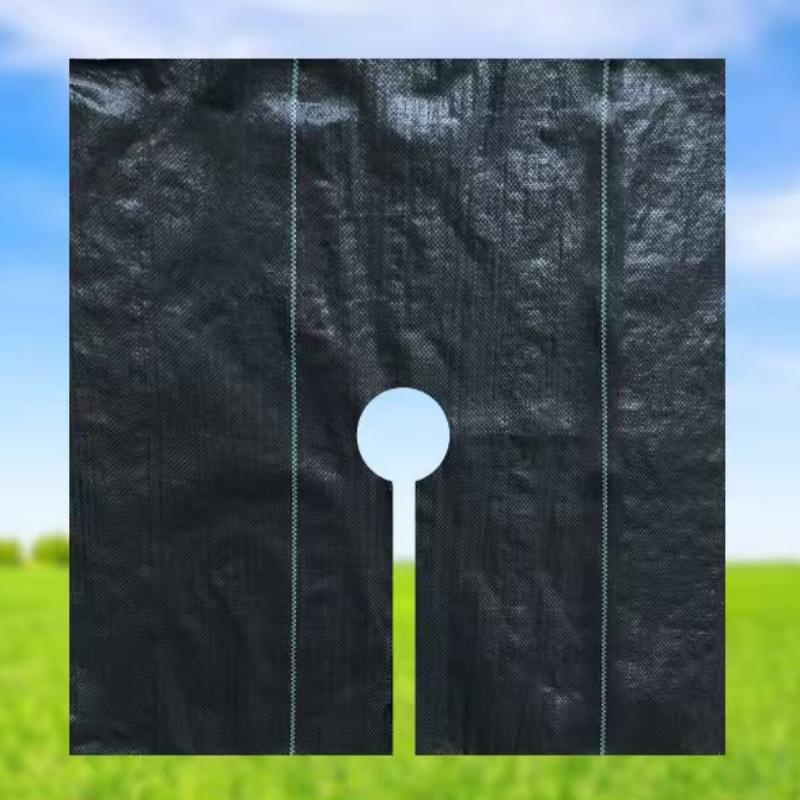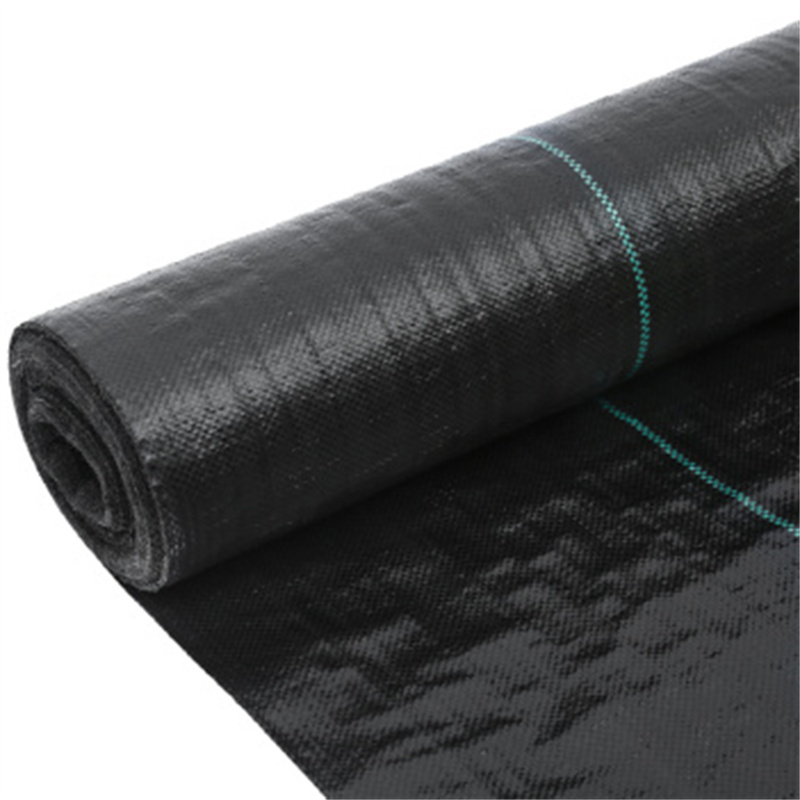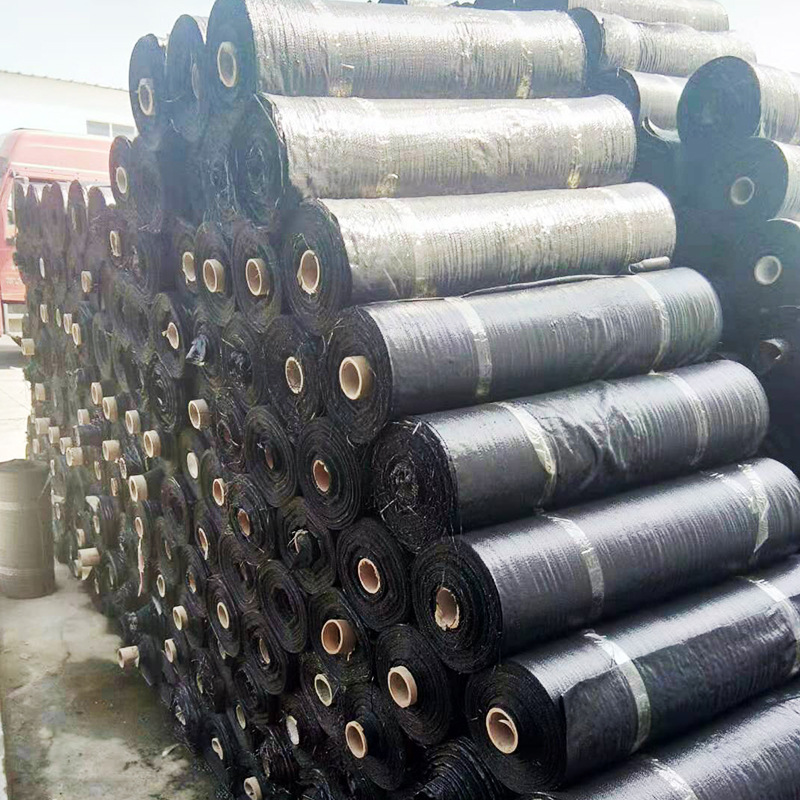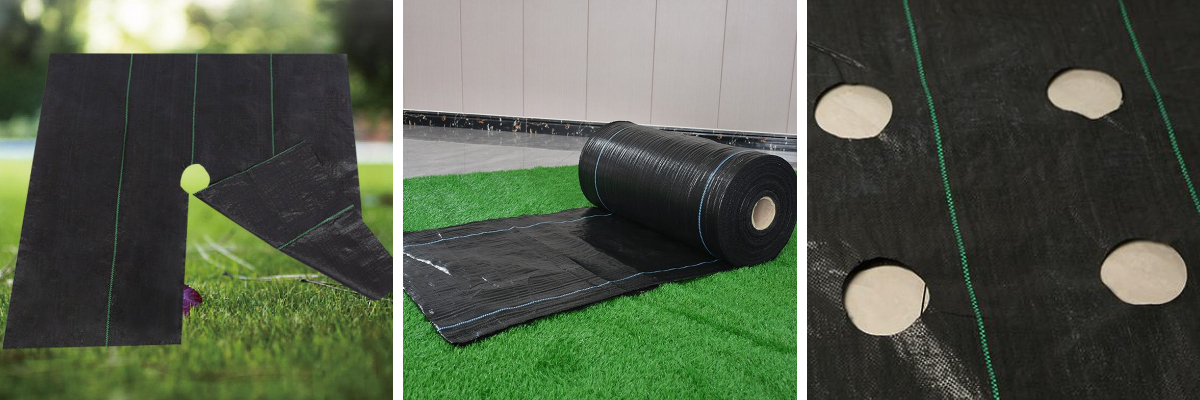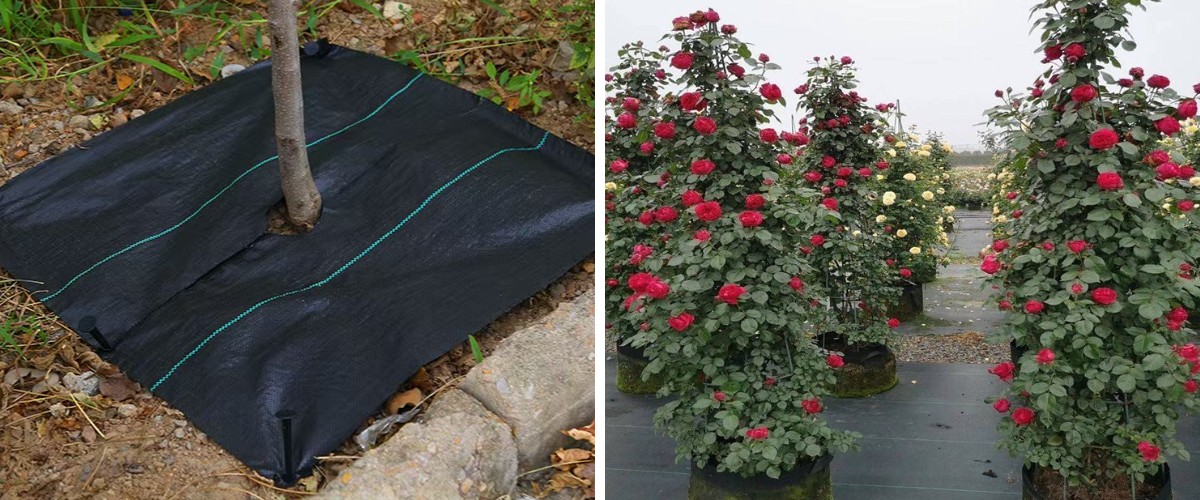Perforated 90g PP Woven Weed Barrier Fabric
1. Perforated for Crop Care: 90g PP woven fabric blocks weeds but lets water/air reach roots—ideal for veg beds.
2. Weed-Stopping Power: Tight weave blocks sunlight, slashing manual weeding by 80% in farms.
3. Soil Protector: Prevents erosion, retains moisture for stable growth (tomatoes, lettuce, etc.).
4. Durable & UV-Resistant: Withstands sun/farm tools, lasting 3+ growing seasons.
5. Easy to Lay: Lightweight, fits seedbeds/transplant areas—great for small farms/gardens.
6. Gentle on Seedlings: Smooth edges avoid damaging young stems during setup.
Perforated 90g PP Woven Weed Barrier Fabric: Agricultural Weed Control Redefined
In agricultural settings, weeds are more than just a nuisance—they compete with crops for water, nutrients, and sunlight, reducing yields by up to 40% in unmanaged fields. The Perforated 90g PP Woven Weed Barrier Fabric is engineered to solve this problem without sacrificing crop health. Unlike solid weed barriers that suffocate soil, its unique perforated design strikes a perfect balance: blocking weeds while nurturing plants. Crafted from high-quality polypropylene (PP), this fabric is built for the demands of farms, vegetable gardens, and orchards, offering long-lasting protection with minimal maintenance.
1. Agricultural-Focused Design
(1) Strategic Perforation Pattern
The fabric features 2-3mm micro-perforations spaced evenly across its surface. These tiny holes are engineered to:
Allow water to penetrate directly to crop roots (up to 80% water permeability)
Permit air circulation, preventing soil compaction and supporting beneficial microbes
Block sunlight from reaching weed seeds (95% light blocking rate), stopping germination without harming crops
(2) Woven PP Structure
The 90g/m² woven PP construction creates a durable yet flexible barrier. Unlike nonwoven fabrics that tear easily, the woven design resists punctures from tools, crop roots, and light foot traffic—critical for busy farm environments. Its lightweight nature (90g/m²) makes it easy to handle, even for large-scale installations.
2. Technical Specifications
Property | Specification | Agricultural Benefit |
Weight | 90g/m² | Lightweight for easy installation; reduces labor time |
Material | Woven polypropylene (PP) | Resists tearing; withstands farm tools and weather |
Perforation Size | 2-3mm diameter | Allows water/air flow; blocks weed growth |
Light Blocking | 95% | Prevents weed seed germination |
Water Permeability | 0.3-0.5 cm/s | Ensures crops get sufficient moisture |
UV Resistance | 1000+ hours of sunlight | Lasts 3+ growing seasons in outdoor fields |
Tensile Strength | ≥6 kN/m (machine direction) | Withstands wind, rain, and light equipment |
Temperature Resistance | -30°C to 70°C | Performs in cold winters and hot summers |
3. Core Benefits for Agriculture
(1) Targeted Weed Suppression
Weeds thrive on sunlight—this fabric cuts off their supply. The 95% light-blocking rate starves existing weeds and prevents new seeds from sprouting, reducing the need for manual weeding by 70% or more. For large farms, this translates to lower labor costs and less crop damage from weeding tools. In organic farms, it eliminates reliance on chemical herbicides, keeping produce natural and compliant with organic certifications.
(2) Crop-Friendly Hydration & Aeration
The 2-3mm perforations act like smart valves: they let rainwater and irrigation seep through to crop roots while allowing soil to breathe. This prevents waterlogging (a common issue with solid plastic barriers) and ensures roots get oxygen—critical for healthy growth in vegetables like tomatoes, peppers, and carrots. In arid regions, the fabric also reduces evaporation by 30%, helping soil retain moisture during dry spells.
(3) Soil Health Protection
Beyond weed control, this barrier safeguards soil structure. It shields topsoil from heavy rain, preventing erosion and nutrient runoff—key for maintaining fertile fields over time. The woven design also discourages compaction, keeping soil loose enough for root expansion. For no-till farming systems, it’s a game-changer: it suppresses weeds without disturbing the soil’s natural ecosystem of worms and microbes.
(4) Durable & Cost-Effective
At 90g/m², the fabric is lightweight enough to handle easily but tough enough to last. Its UV-resistant PP material stands up to 1000+ hours of direct sunlight—enough for 3+ growing seasons in most climates. Unlike disposable mulches that need yearly replacement, this barrier offers long-term value, cutting annual weed control costs by 50% or more. It also resists tearing from farm equipment, making it suitable for use in mechanized fields.
(5) Versatile for All Crop Types
Whether you’re growing row crops, orchards, or high-value vegetables, this fabric adapts. In vineyards, it suppresses weeds around grapevines without interfering with root growth. In raised garden beds, it lines the bottom to keep weeds out while letting excess water drain. For strawberry patches, it creates a clean, weed-free surface that keeps berries off the soil, reducing rot and making harvesting easier.
4. Ideal Agricultural Applications
Crop/Setting | How the Barrier Adds Value |
Vegetable Gardens (Tomatoes, Cucumbers) | Blocks weeds, keeps soil moist, and reduces fruit rot by keeping plants off damp soil |
Orchards (Apple, Citrus) | Suppresses weeds around tree bases, reduces mowing costs, and protects shallow roots |
Vineyards | Prevents weed competition for water, making irrigation more efficient; stands up to tractor traffic |
Organic Farms | Meets organic standards by replacing herbicides; keeps soil healthy for certified crops |
Greenhouses & Nurseries | Controls weeds in potted plants and seedling beds without chemicals |
Flower Fields | Keeps cut flower beds neat, reduces weeding time, and protects delicate roots |
5. Installation & Maintenance Tips
(1) Installation Steps:
Prepare the Soil: Clear existing weeds and level the soil. For best results, till lightly to break up clumps.
Lay the Fabric: Unroll the barrier over the planting area, ensuring it covers the entire weed-prone zone. Leave a 5cm overlap at seams to prevent weeds from sneaking through.
Secure the Edges: Use landscape staples (every 30-50cm) to pin the fabric to the soil, especially along edges and seams. This prevents wind from lifting it.
Cut Planting Holes: For established plants, cut small X-shaped slits in the fabric (just large enough for stems). For seeds, wait until seedlings emerge, then cut holes around them.
(2)Maintenance:
Check Annually: Inspect for tears or loose edges—repair with fabric patches if needed.
Clear Debris: Remove leaves and sticks that accumulate on top, as they can trap moisture and encourage weeds.
Reinforce in High-Traffic Areas: Add extra staples in spots where farm equipment passes to prevent shifting.
The Perforated 90g PP Woven Weed Barrier Fabric isn't just a weed blocker—it's a crop booster. By focusing on both weed control and crop health, it helps farmers grow more with less effort, cost, and environmental impact. Whether you’re a small-scale gardener or a large commercial farm, it’s a tool that pays for itself in higher yields and lower labor.
Contact us to order custom lengths or get advice on using the fabric for your specific crops.


